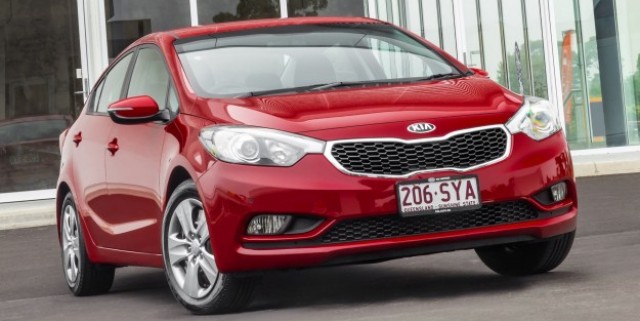
A base model of the new Kia Cerato has been specially packaged to help the South Korean brand break into Australia's important fleet market.
The Cerato small car is Kia's biggest-selling model globally but has struggled to make significant ground in Australia's most popular segment.
Kia Australia sold 7881 Cerato hatches and sedans in 2012, a figure that failed to get the model into the top 10 for the year.
It was outsold by models that included the market-leading Mazda 3 (44,128 sales), i30 (28,348) and Elantra (8697) from parent company Hyundai, and even the generally costlier Volkswagen Golf (17,289).
Kia says it has been hampered by previous models that didn't have the necessary credentials to be considered by fleet buyers. The company says fleet sales account for about 20 per cent of the Hyundai i30.
"With the previous generation Cerato… that car we did not sell to fleets," says Kia Australia's general manager of marketing, Steve Watt. "Fleets specify CO2 emissions, how many [safety] stars it's got, [government] Green Vehicle Guide rating, and all those things that make a government list.
"And if you don't make the government list for all those criterion being ticked, you're not going to sell any cars.
Kia's answer is the all-new Kia Cerato that has been launched this week in Australia and starts from $19,990.
The base model gets a smaller, 1.8-litre four-cylinder petrol engine compared with the mid-spec Si and range-topping SLi variants.
It's a cheaper engine to manufacture than the direct injection 2.0-litre four-cylinder in other Ceratos, while it also allows the base S to offer better fuel economy
The Kia Cerato S officially uses 6.6 litres of unleaded per 100km with a manual gearbox or 7.1L/100km with an optional six-speed auto. The 2.0-litre four-cylinder models have comparable figures of 7.4L/100km.
The base Cerato is decently equipped, including front and rear parking sensors, foglights, cruise control and Bluetooth.
The starting price of the Kia Cerato has increased by $600, though, which the company says was forced by the features it had to include.
"We wanted to do was make sure the base car was the most appropriate to conquest fleet sales, and as you add those components to the car you get to a certain price cost to us," says Watt. "So that price point [of $19,990] is really based on maximising our opportunity with the sales we never got in the past."





